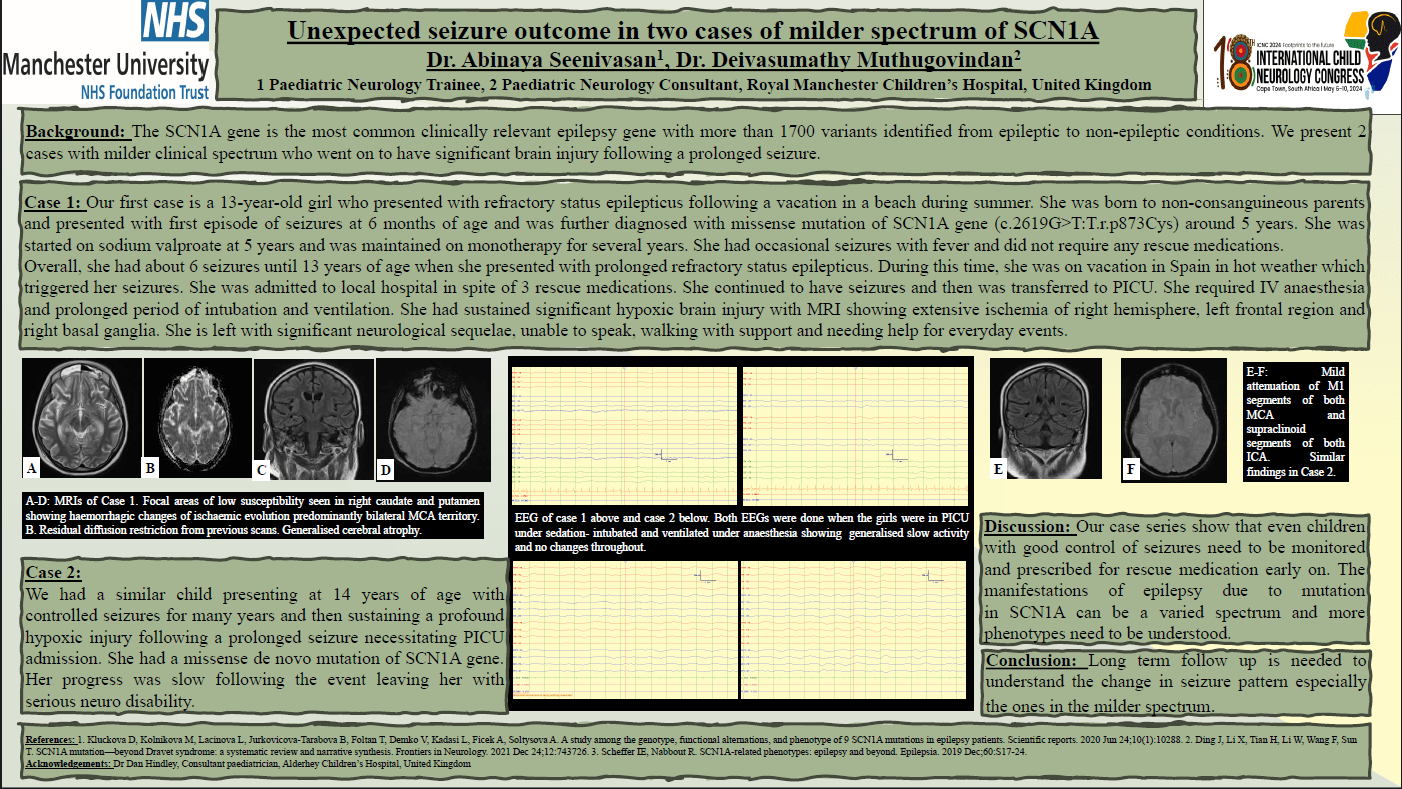Unexpected Seizure Outcome In Two Cases Of Milder Spectrum Of SCN1A
Background: The SCN1A gene is the most common clinically relevant epilepsy gene with more than 1700 variants identified from epileptic to non-epileptic conditions. We present 2 cases with milder clinical spectrum who went on to have significant brain injury following a prolonged seizure. Case 1: 13-year-old girl presented with refractory status epilepticus following a vacation in a beach during summer. She was diagnosed with SCN1A epilepsy around 5 years and had well controlled seizures on monotherapy for several years. She required iv anesthetics to achieve burst suppression and prolonged period of intubation & ventilation She had sustained significant hypoxic brain injury with MRI showing extensive ischemia of right hemisphere, Left frontal region and right basal ganglia. She has left with significant neurological sequelae, unable to speak, walking with support and needing help for everyday events. Case 2: We had a similar child presenting at 14 years of age with controlled seizures for many years and then sustaining a profound hypoxic injury following a prolonged seizure necessitating PICU admission. Her progress was slow following the event leaving her with serious neurodisability. Discussion: Our case series show that even children with good control of seizures need to be monitored and prescribed for rescue medication early on. The manifestations of epilepsy due to mutation in SCN1A can be a varied spectrum and more phenotypes need to be understood. Conclusion: Long term follow up is needed to understand the change in seizure pattern especially the ones in the milder spectrum.
Abinaya Seenivasan
Royal Manchester Children's Hospital
United Kingdom
Deivasumathy Muthugovindan
Royal Manchester Children's Hospital
United Kingdom
